My mid-September round on Royal Melbourne’s East Course was the second 18 of the day. The weather was cold, grey, and slightly misty as you’ll see in the photos, but the clouds opened for a dramatic sunset on the 17th and 18th holes.
The anticipation builds as you drive up to Royal Melbourne. Large square-cut hedges border each side of the road and they only allow brief glimpses of the golf courses – just enough to tantalize visitors. Once you park, the large clubhouse comes into focus.
The clubhouse opened in 2003 and in places it feels purpose-built for hosting large tournaments. There are small gates to access the rear of the clubhouse and many of the doors have keypads for entry. During normal play, particularly with a knowledgeable member-host, you don’t always notice the small differences. That said, it is clear that hosting large events factored into the design process and I’m sure those small changes make it much easier play host.
The interior of the clubhouse is filled with historical Australian golf memorabilia, much of which documents tournaments that have taken place at the course. My favorite part of the clubhouse was an upstairs library packed with golf books… heaven!
After our morning round on the West Course, we stopped into the clubhouse for lunch and another short tour. The pride my host had in Royal Melbourne was contagious. It made me enjoy the day even more, and it was something that I found at nearly every course we played. Every Australian golfer was so proud – rightfully so – of their courses and country.
East Course History
When Alister MacKenzie visited Royal Melbourne in 1926 to create a layout for the West Course, he worked with local Alex Russell who then oversaw construction of the course. Fittingly, it was Russell who went on to design the East Course, and M.A. Morcom who constructed the West Course was on hand to do the same for the East. It is said that MacKenzie laid out a nine-hole East Course that was never built, but Russell may have incorporated some of those holes in his design.
Russell was a Royal Melbourne member and the 1924 Australian Open winner. His design input on the West Course is unclear, but he unquestionably worked closely with MacKenzie during the design phase. It is also clear that Russell must have had some autonomy during construction since MacKenzie had left Australia at that point.
Simply put, Alex Russell was a great choice for the club to maintain design continuity between its East and West courses. Few people could have been as intimately involved in both designs.
Royal Melbourne Tournament History
If you have two world-class golf courses beside one another, which one would you choose to host tournaments at the club? The ideal scenario would obviously be to use the best holes from each, and that is exactly what Royal Melbourne started doing in 1959. Their “composite” course is comprised of 12 holes from the West Course and 6 from the East, leaving what most consider to be one of the best courses in the world.
The club has an extremely deep tournament history, which can be viewed on Royal Melbourne’s website. It has hosted international team events and many professional and amateur events. Everyone from Sam Torrance and Seve Ballesteros to Adam Scott and Jason Day have won on the Royal Melbourne grounds.
East Course Review
The East Course plays second fiddle to the West Course, which is considered to be the best in Australia. Most critics say the West is better because it has fewer “weak” holes. It is true that the East has a few lackluster holes during the middle of the round, but it also has some absolute stunners. Read both East and West reviews and when you have time, let me know your thoughts about both in the comments below.
Hole #1 – 333 yards – The East Course opens with a blind tee shot over a hill and an approach to a thin green guarded by two deep bunkers.
Hole #2 – 440 yards – The second is a hard dogleg right and the photo below is taken in the fairway landing area. The uphill approach creates an intimidating view of the green that makes it seem much smaller than it actually is.
Hole #3 – 383 yards – This was one of my favorite holes on the course – largely due to the green. It is a sweeping dogleg right with a downhill approach to the green. All of the greens at Royal Melbourne were very fast and smooth, and with that in mind, look at all of the approach options you have on this hole. The hole could play like anything from a reverse Redan to a high soft shot landing on the back tier.
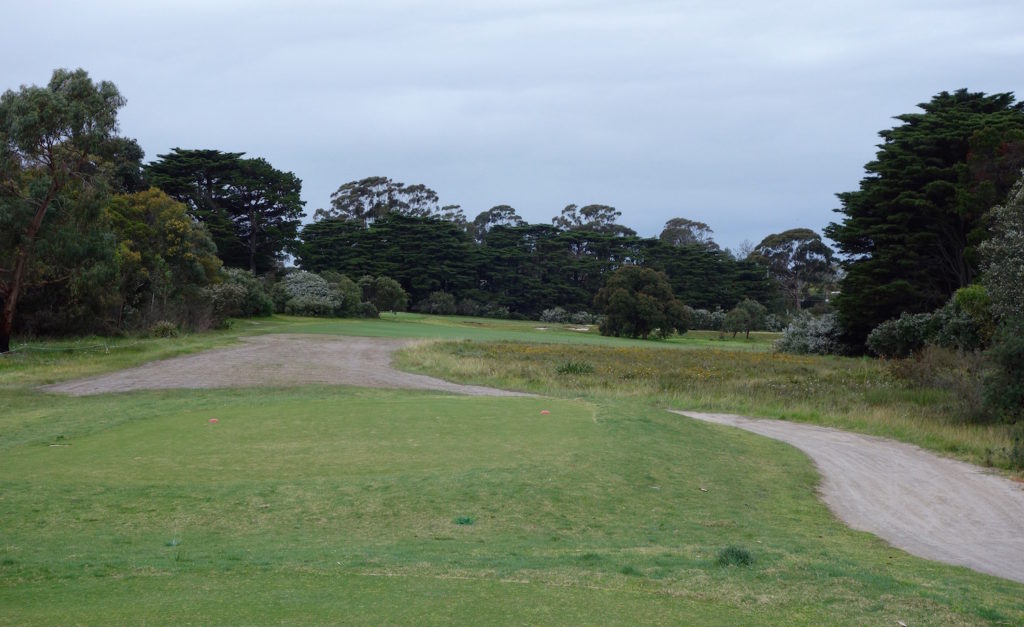
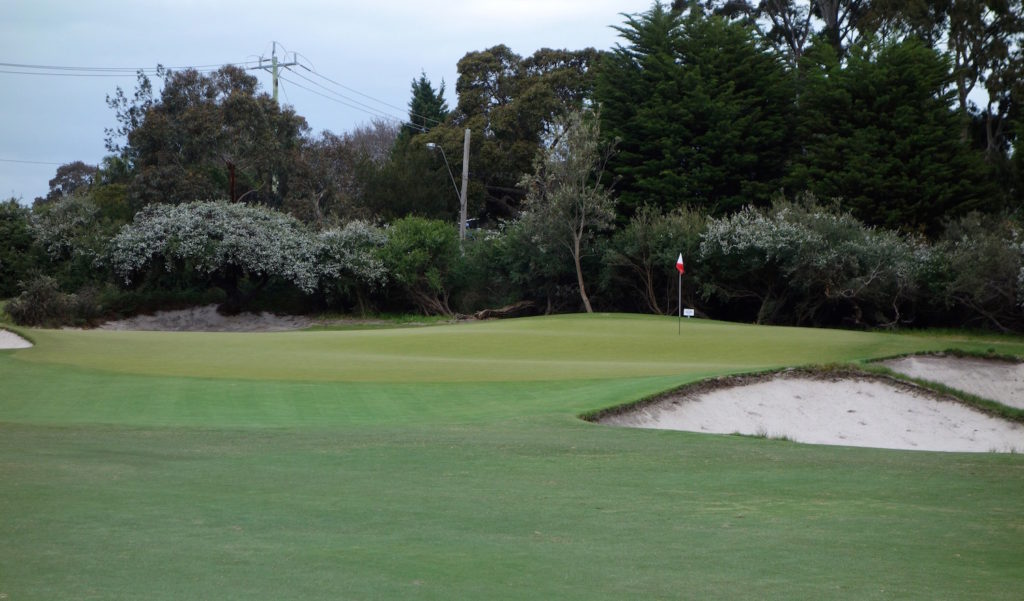
Hole #4 – 201 yards – This par 3 works back up the hill and when the course is running firm and fast, anything short will run back into those deep bunkers.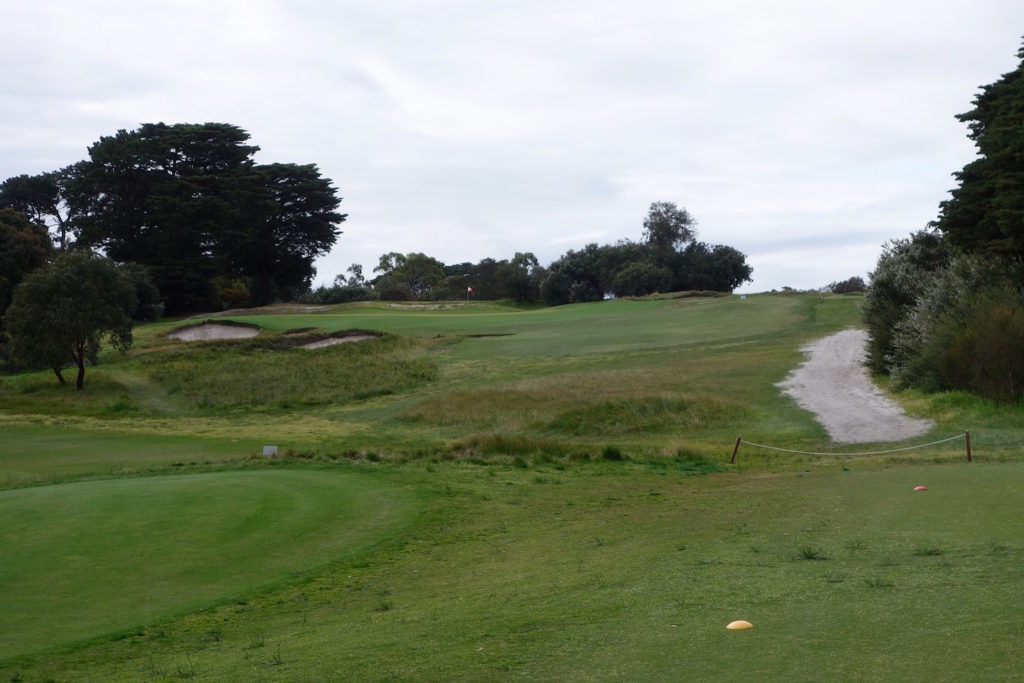
Hole #5 – 347 yards – This tee shot is blind over a small hill. This approach shot reminded me of many that I saw earlier in the trip at Metropolitan Golf Club with bunkers defining the edge of the green.
Hole #6 – 175 yards – This par three was changed in 2004 and again in 2012 by Tom Doak. The green slopes right to left, but to use that slope players have to hit a shot into the heart of the putting surface.
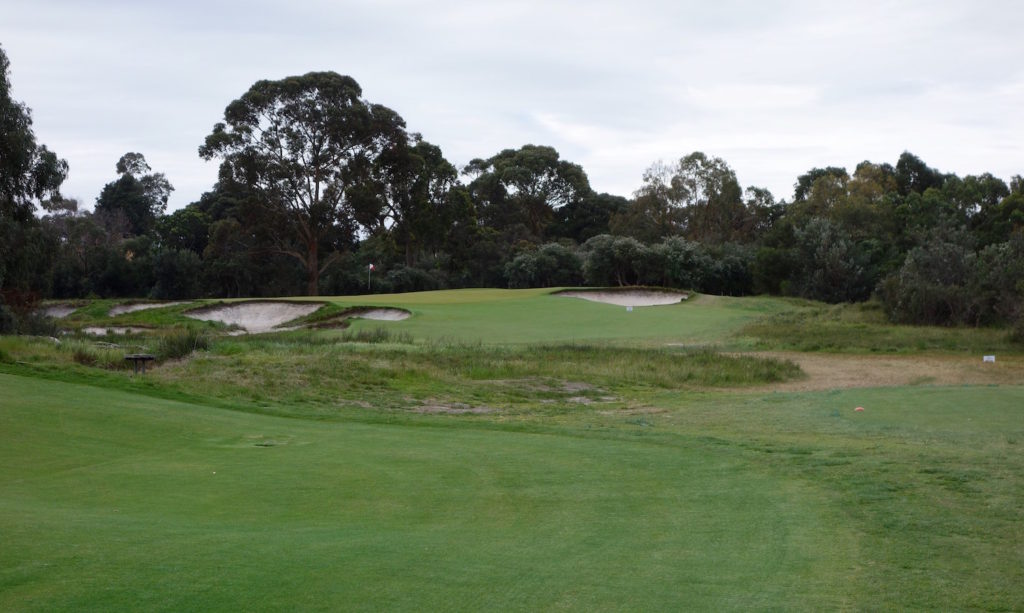
Hole #7 – 520 yards – This long par 5 works uphill with bunkers flanking most of the fairway. The green is well-guarded, and again, the play is to be aggressive and hit your approach into the meat of the green.
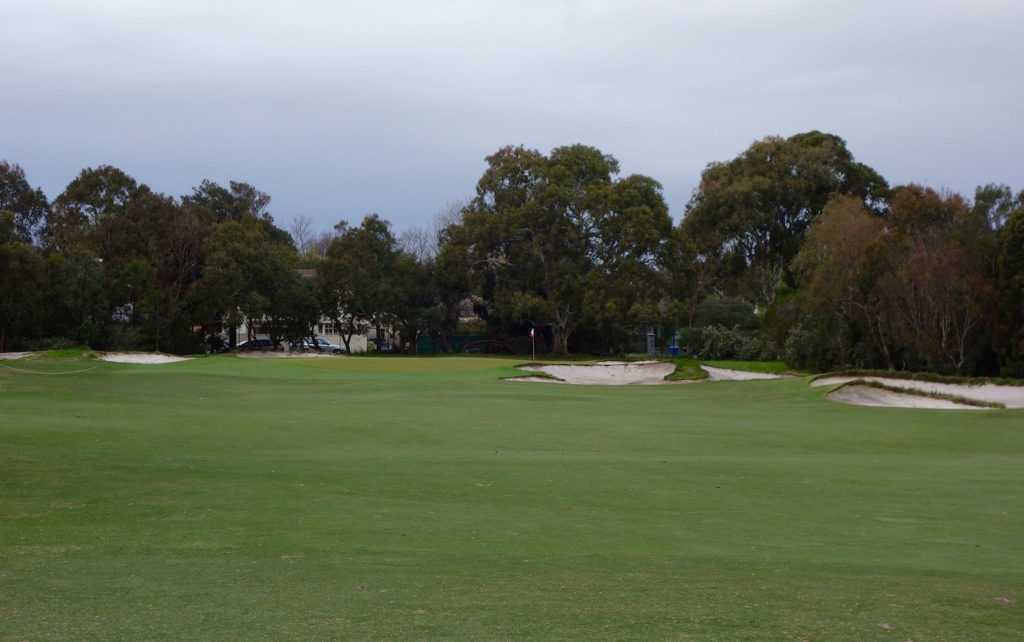
Hole #12 – 451 yards – This is one of the longest holes on the East Course. After a drive toward the grouping of three bunkers, the hole breaks off to the right and a green that lies about 50-yards past the traps.
Hole #13 – 148 yards – The shortest par 3 on the course is surrounded by red river gum trees and features more of the beautiful bunkering from the Sandbelt. The front left and right bunkers make the green appear much narrower than it is.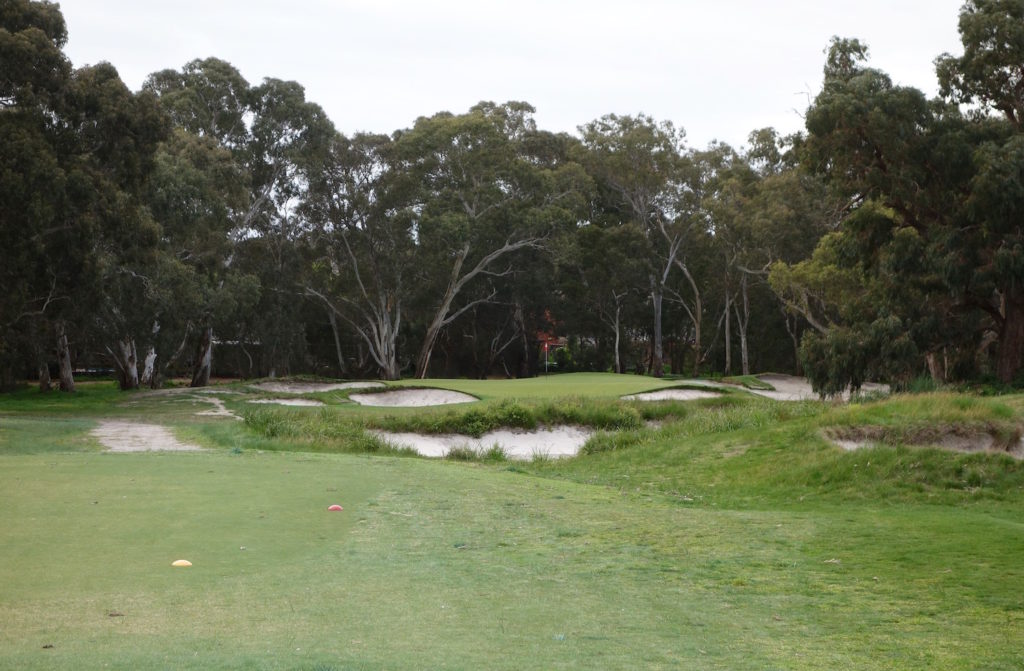
Hole #15 – 303 yards – This short par 4 was reworked by Tom Doak who changed the bunkering and heathland area on the right. The smartest play is to stay out left, leaving the best angle into this sloping and tricky green.
At this point in the round it started to get pretty dark!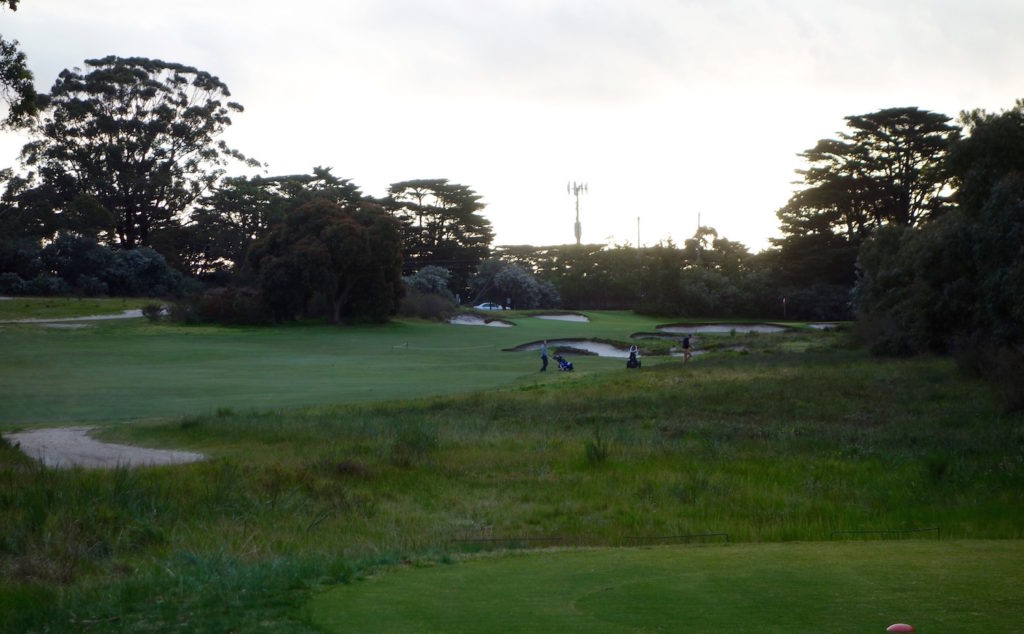
Hole #16 – 166 yards – All of the par 3s on the East Course are great, but this one stands above the rest. The large green provides many pin placement options and although it might seem easy, take another look at those bunkers framing the green.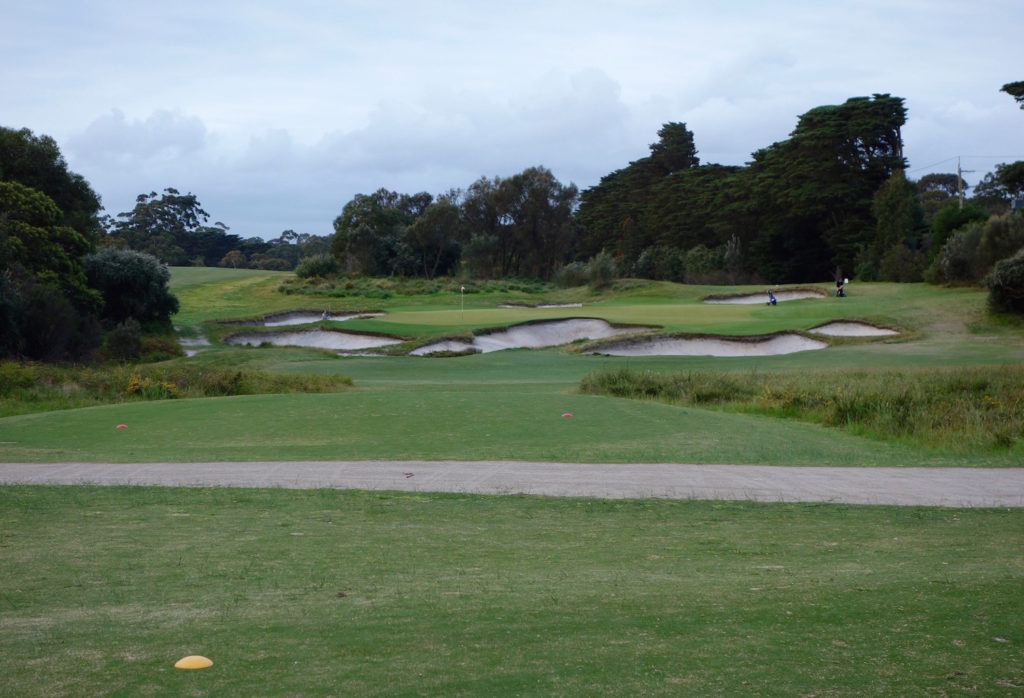
Hole #17 – 572 yards – This sweeping dogleg right par 5 is a famous hole in the Composite Course. There are many options for second shots on this par 5 where a string of bunkers short of the green complicated layups.
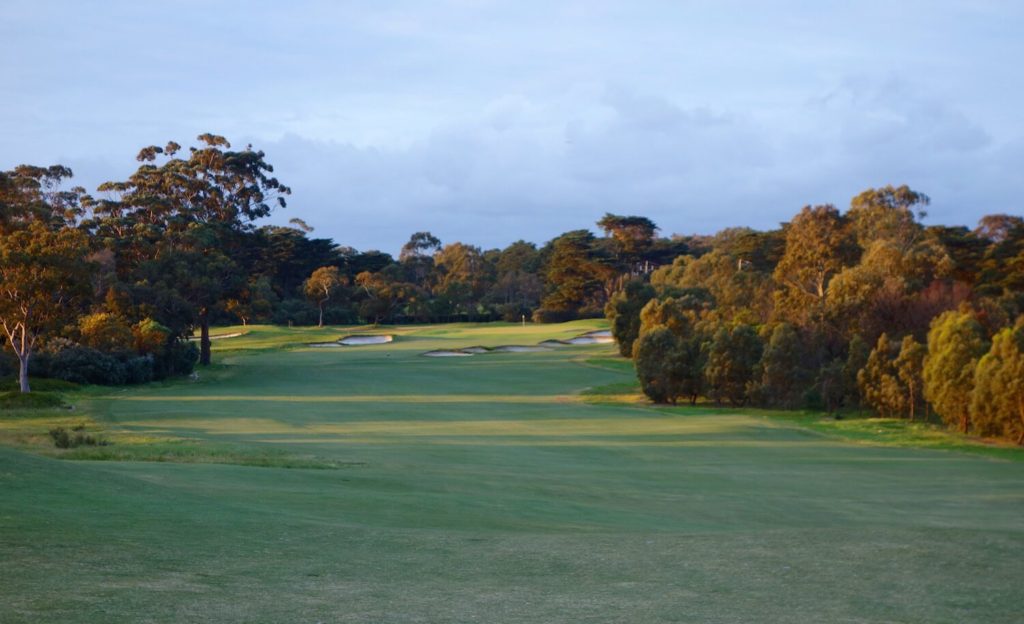
Hole #18 – 432 yards – Royal Melbourne’s guide for this hole reads, “It is very easy for the fearful driver to turn what is usually a reasonably easy hole into one that is much more difficult.” The hole is a dogleg left working back toward the clubhouse with deep rough through the fairway on the right. The approach to the green is filled with fearsome bunkers that are a final reminder of what the Sandbelt does best.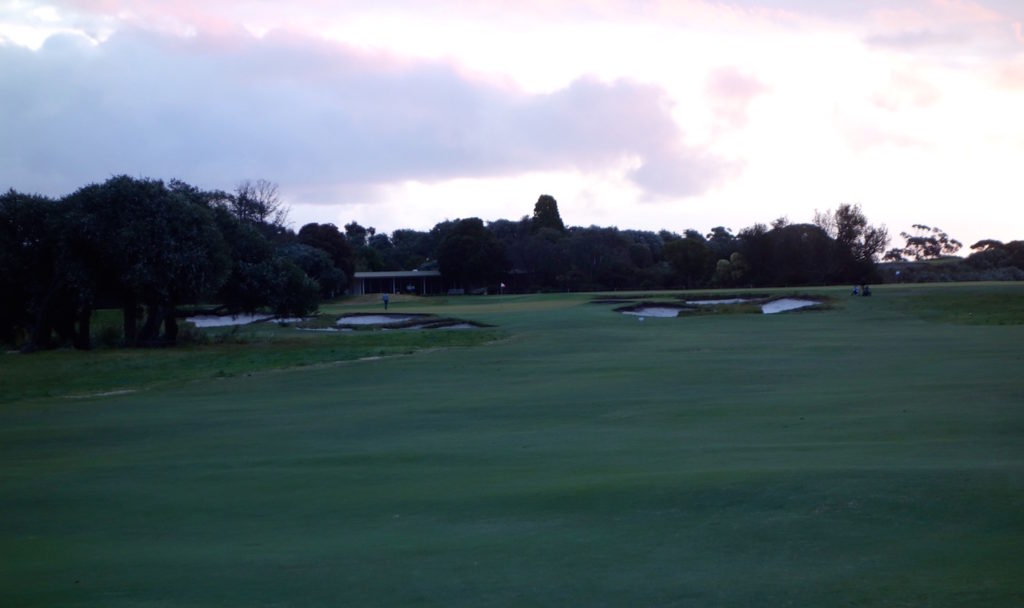

Finishing my 36-hole day at Royal Melbourne during a dramatic sunset capped off a great experience. I hope that I am able to return to Australia one day to see the course in peak summer conditions on a bright, sunny day. What struck me the most was the quality of the land at Royal Melbourne. The hills and slopes – and how they are maximized by the design – are what set both courses apart from others that I saw during the trip. Hopefully I’ll get to see them again!

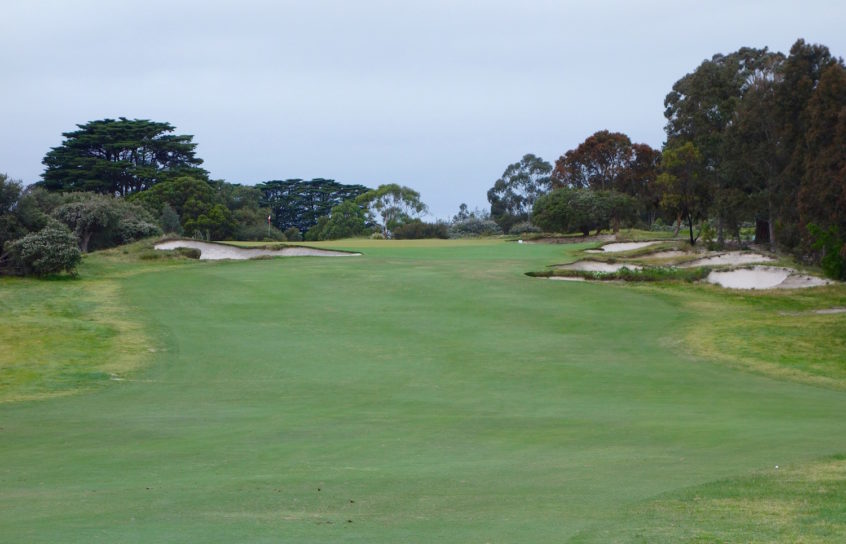
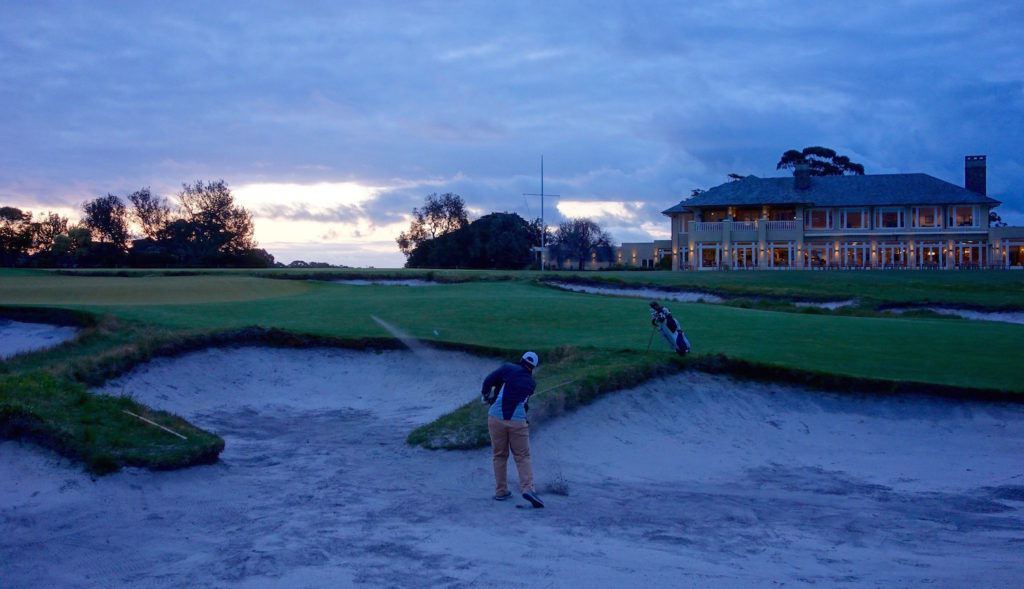
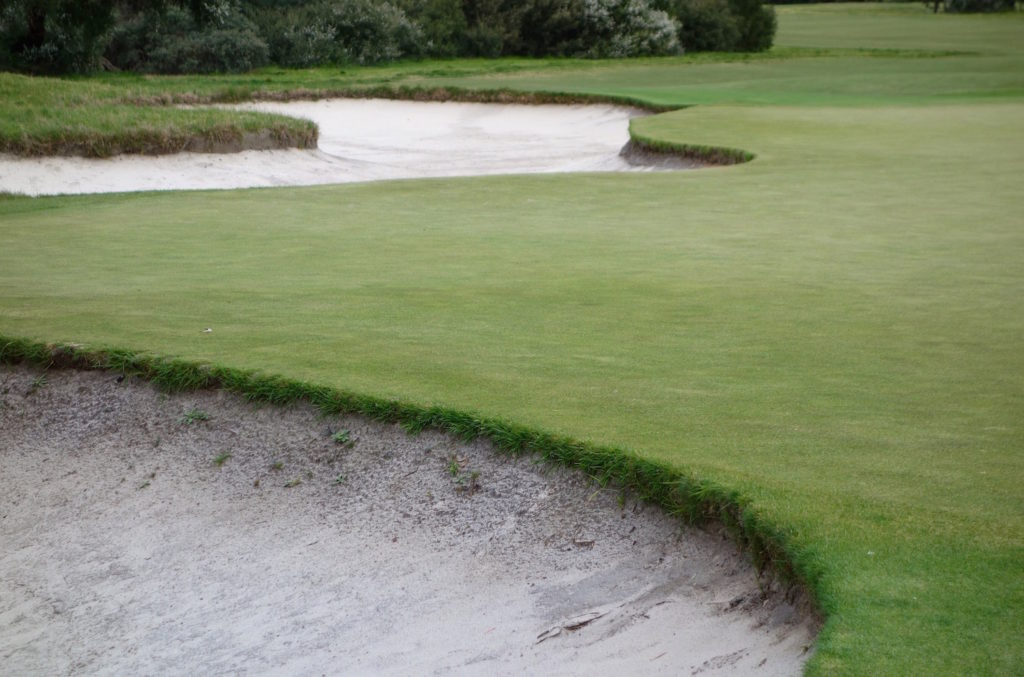
5 Comments on “Royal Melbourne Golf Club – East Course Review”
you missed the best hole on the East- the 10th, after 4W the best par 5 of the lot
I know… it pains me to say it, but I didn’t take a photo there! Balancing photos and making notes for a review while actually playing the course is something I’m still working on. Sometimes the actual golf takes over and I completely forget I even have my camera. Oh well!
The picture you have included for 17 East is actually a picture of 4 West. Glad you enjoyed.
Hi Darren, thank you for the comment and pointing out my mistake – I will switch out the correct photo shortly. Thanks!
I am playing there is a couple of weeks and your photos and review of these sand belt courses has raised my expectations even more.